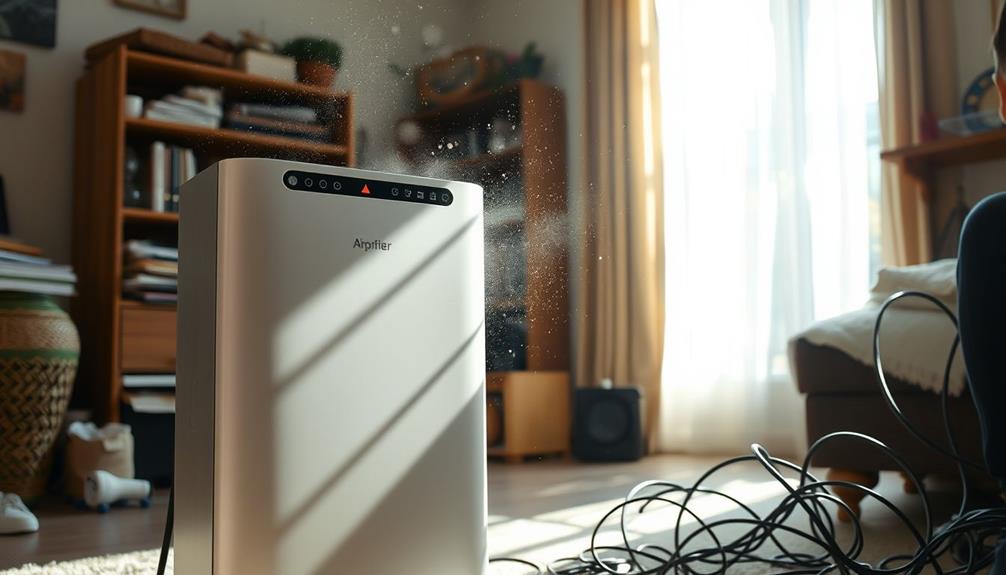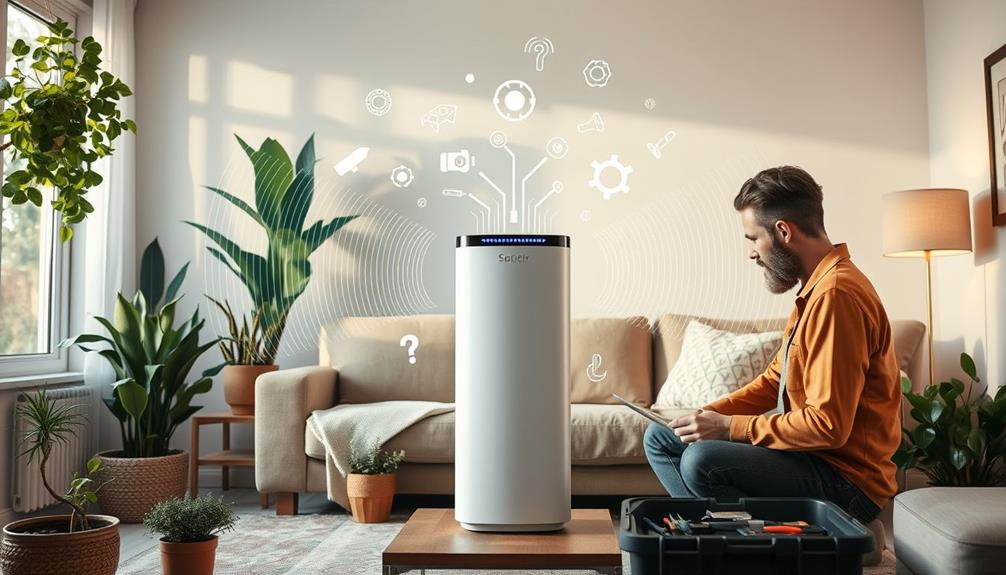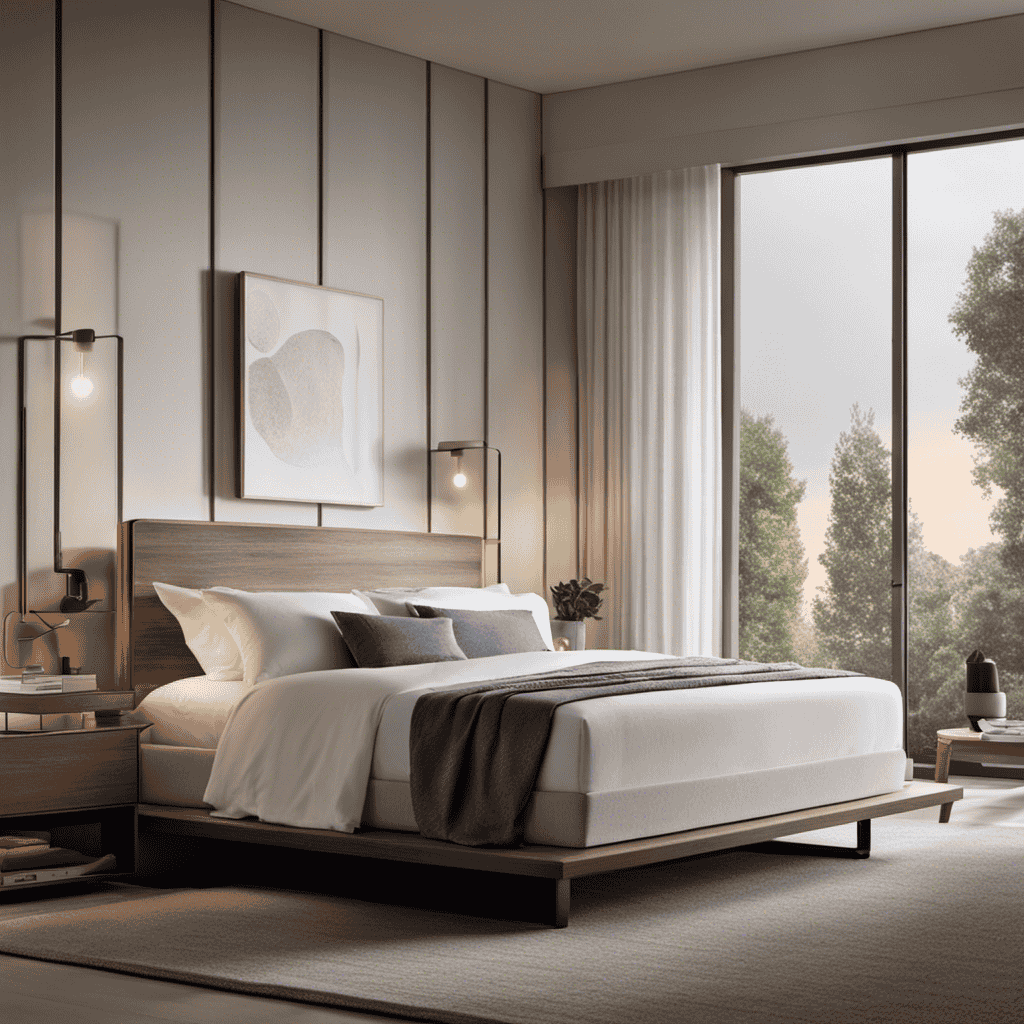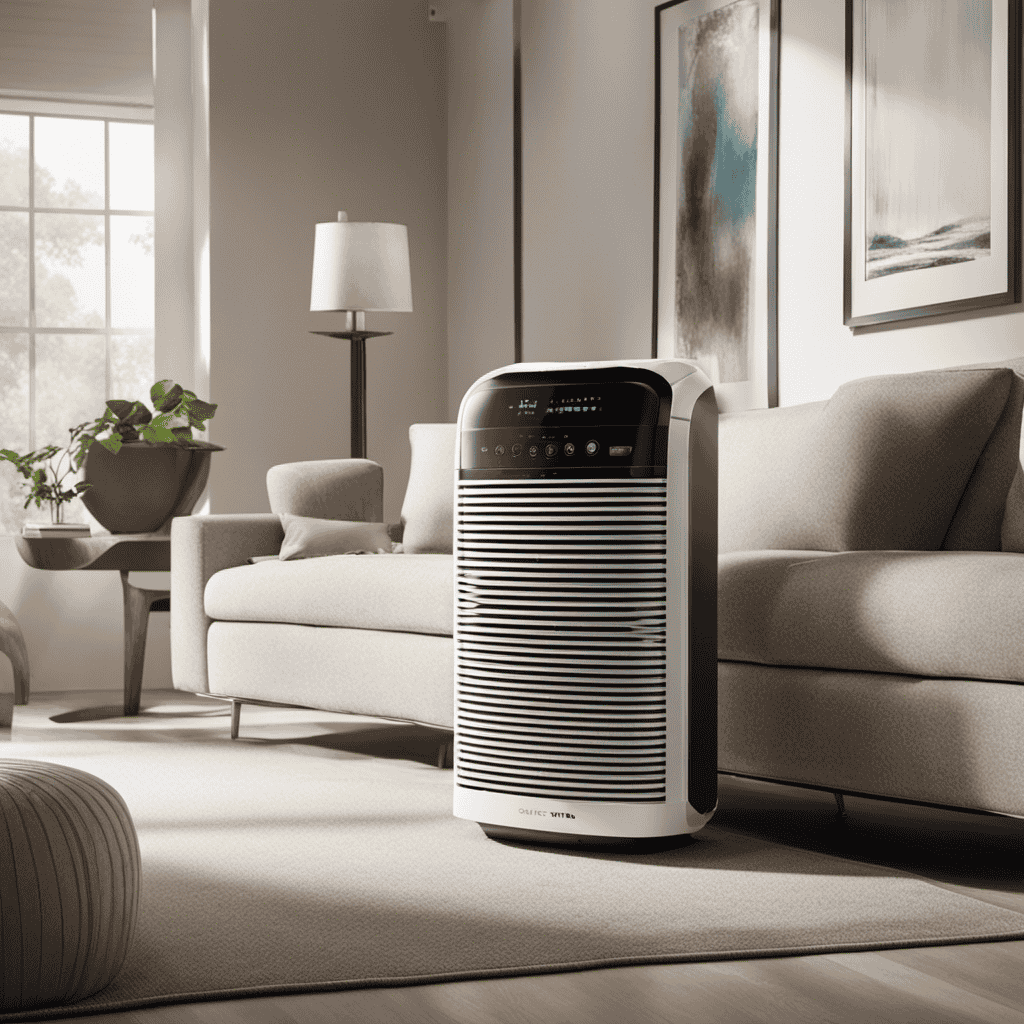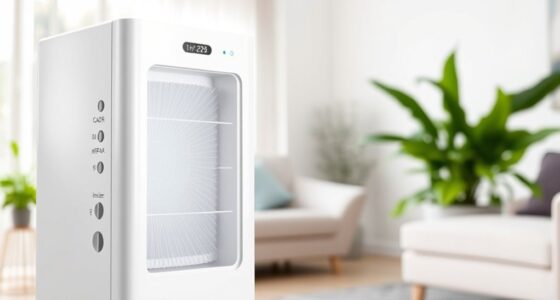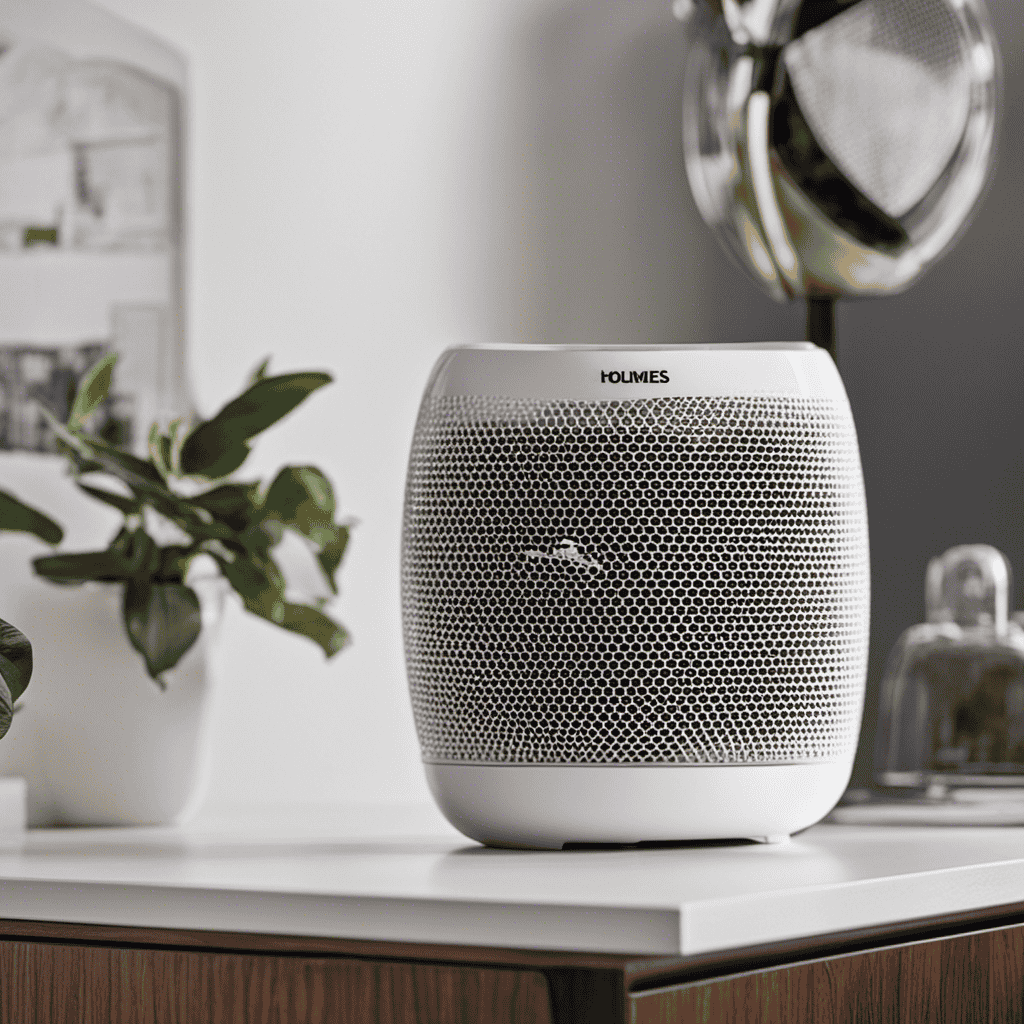If your air purifier isn't working, there are a few common culprits to evaluate. Clogged filters can hinder airflow and must be changed regularly. You might also face insufficient airflow due to dust blockages or packaging left on new filters. A damaged power cord could prevent it from turning on, while overheating issues may arise from poor ventilation. Finally, unresponsive controls often signal a deeper problem. Don't worry—most of these issues have straightforward solutions. Keep exploring to uncover more strategies to restore your air purifier's performance.
Key Takeaways
- Clogged Filters: Regularly change or clean filters to prevent airflow blockage and ensure effective pollutant removal.
- Insufficient Airflow: Check for dust or debris blockage and remove all protective materials from new filters to maintain optimal airflow.
- Damaged Power Cord: Inspect for fraying or cuts in the power cord; replace it if damaged, following manufacturer guidelines.
- Overheating Issues: Ensure proper ventilation and clean dust from vents to prevent overheating; monitor for safety shutdowns.
- Unresponsive Controls: Secure power cord connections, ensure filter cover is correctly placed, and reset by unplugging the unit briefly.
Clogged Filters
Clogged filters can be a major headache for air purifier users. When your filter gets dirty, it can trap particles like mold, pollen, and dust, which greatly hinders airflow. Even if your air purifier is working, a dirty filter might be releasing trapped contaminants back into your home, worsening indoor air quality instead of improving it.
To keep your air purifier effective, you need to be proactive about maintaining clean filters. Regular filter changes are essential for maintaining efficiency, especially in environments with high levels of pollutants, as noted in general air purifier usage.
Common reasons for clogged filters include high levels of pollutants in your environment and infrequent maintenance. Depending on usage and air quality, most air purifiers require filter replacement every 1-3 months for carbon filters and every 12-18 months for HEPA filters. An air quality monitor can help you track when your filter needs attention, guaranteeing it operates at peak performance.
Neglecting filter maintenance not only compromises your air purifier's effectiveness but could also pose health risks. By regularly cleaning or replacing filters, you'll guarantee your air purifier excels at removing pollutants and maintaining a healthier indoor environment.
Take charge of your air quality, and don't let clogged filters sabotage your efforts!
Insufficient Airflow
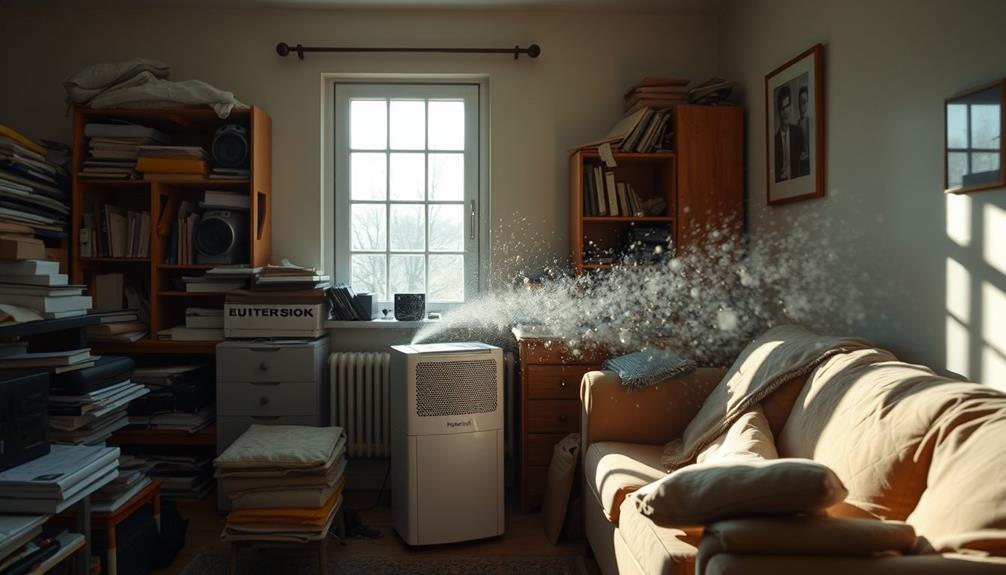
How can insufficient airflow affect your air purifier's performance? When there's insufficient airflow, your air purifier struggles to circulate and filter air effectively. Blockages in the air intake or exhaust can lead to reduced airflow efficiency, causing unpleasant odors and diminished air quality. Make certain you remove any packaging from new filters, as these can obstruct airflow too.
Here's a quick reference table to identify common airflow issues:
| Issue | Cause | Solution |
|---|---|---|
| Blockages | Dust or debris accumulation | Regular cleaning |
| Low fan speed | Ineffective purification | Increase fan speed |
| Clogged grills | Dust buildup | Clean inlet and outlet grills |
| New filter packaging | Obstructed airflow | Remove all protective materials |
| Mechanical problems | Internal device failure | Seek professional servicing |
If you notice persistent airflow issues, don't hesitate to consult a professional. Regularly checking and cleaning your air purifier can keep it functioning well, but some mechanical problems might need expert attention to guarantee peak performance.
Damaged Power Cord
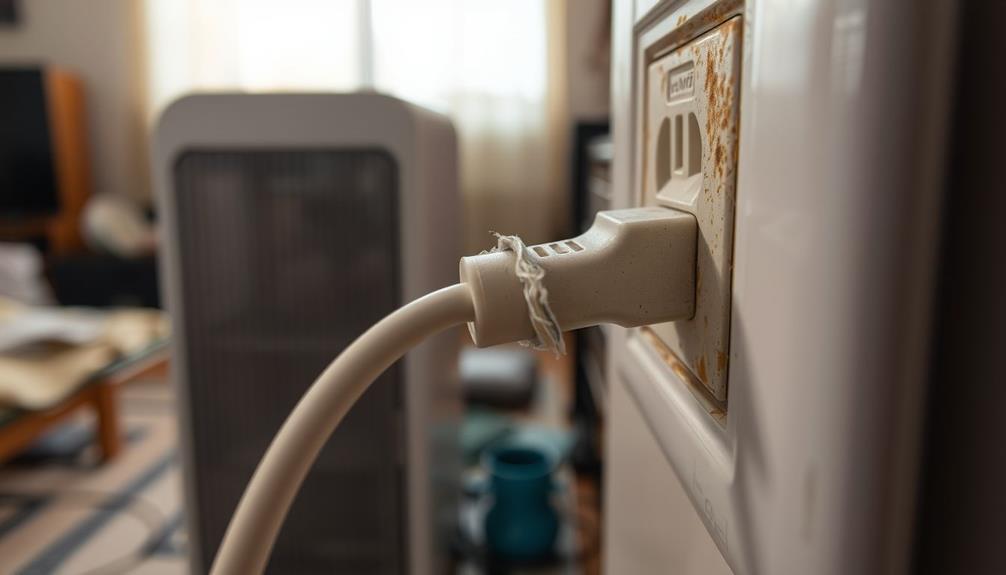
Over time, a damaged power cord can seriously impact your air purifier's performance. If your air purifier isn't receiving electricity due to power cord damage, it won't operate at all. Common culprits of this damage include fraying, cuts, or regular wear and tear.
It's vital to inspect your power cord regularly for any signs of wear; if you notice any damage, stop using the air purifier immediately. Continuing to use a damaged power cord not only leads to operational issues but can also create serious safety hazards.
Additionally, guaranteeing your air purifier is part of a reliable home security system can help protect it from potential theft or tampering, which adds to its overall functionality and safety—importance of home security systems.
Replacing a damaged power cord with an undamaged one can quickly restore your air purifier's functionality. Make certain to follow the manufacturer's guidelines when replacing the cord to guarantee proper compatibility.
If you're unsure about how to proceed, consult a professional for assistance.
Overheating Issues
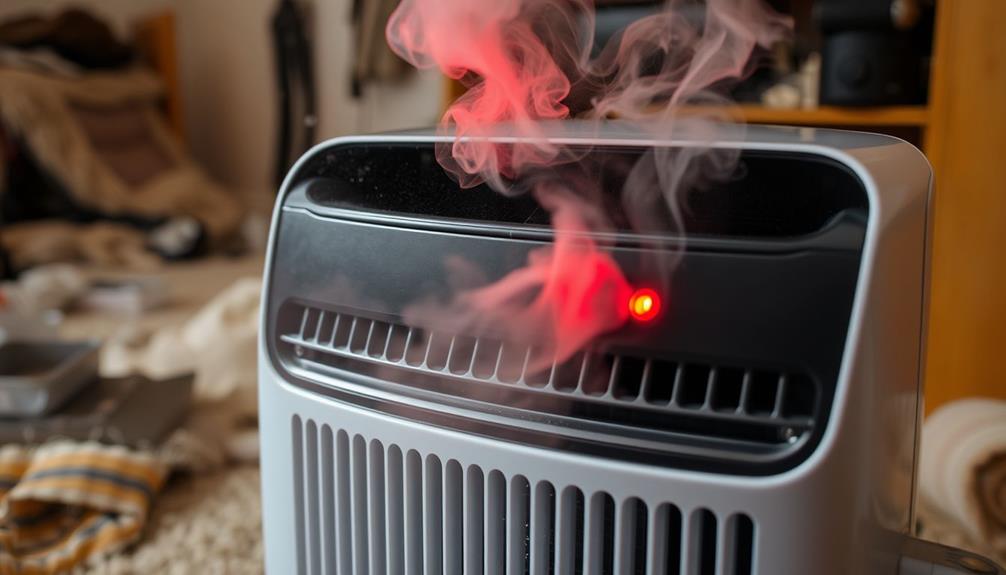
A damaged power cord can lead to operational issues, but once your air purifier is working, you might face another concern: overheating. Overheating can stem from faulty power sources, internal component malfunctions, or inadequate ventilation around the unit.
Additionally, maintaining a balanced lifestyle, including proper hydration and regular exercise, can help guarantee that your air purifier functions at its best by promoting a healthier indoor environment effective strategies include to reduce airborne pollutants.
Fortunately, most air purifiers are equipped with built-in safety features that trigger an automatic shutdown when excessive heat levels are reached, preventing permanent damage.
To keep your air purifier functioning well and reduce the risk of overheating, consider these tips:
- Assure proper airflow: Keep the unit in an open space, away from walls and obstructions.
- Perform regular maintenance: Clean dust from vents and replace filters as needed to enhance performance.
- Monitor signs of overheating: Look out for a hot exterior or frequent shutdowns that indicate potential problems.
- Schedule servicing: If you notice any warning signs, have a professional inspect the unit to prevent total device malfunction or fire hazards.
Ignoring these overheating issues can lead to severe failures, so timely intervention is essential.
Stay proactive to guarantee your air purifier runs safely and effectively!
Unresponsive Controls

Unresponsive controls can be frustrating, especially when you rely on your air purifier for clean air. If you notice that the controls aren't responding, it may indicate a malfunction in the unit. Before jumping to conclusions, check the power cord connections to verify they're secure. A loose connection can often lead to control issues.
Also, make sure the filter cover is properly placed, as improper assembly can interfere with the controls. Additionally, verifying your home environment is safe from ten household dangers can help maintain the overall functionality of your appliances.
If everything seems in order but the controls remain unresponsive, try unplugging the unit for a brief period. This simple step can help reset the system and restore functionality. Regularly testing the controls can help you identify issues early, preventing more significant malfunctions down the line.
However, if problems persist after your troubleshooting efforts, it's time to consult a technician or contact customer service for further assistance. They can provide guidance on resolving unresponsive controls and verify your air purifier is working effectively again.
Conclusion
If your air purifier feels more like a dusty paperweight than a refreshing change, don't panic! By tackling clogged filters, ensuring proper airflow, checking that power cord, addressing overheating, and fixing those stubborn controls, you can transform your machine back into a superhero of clean air! So, roll up your sleeves and give your air purifier the TLC it needs—before it decides to go on a permanent vacation from purifying your space!
